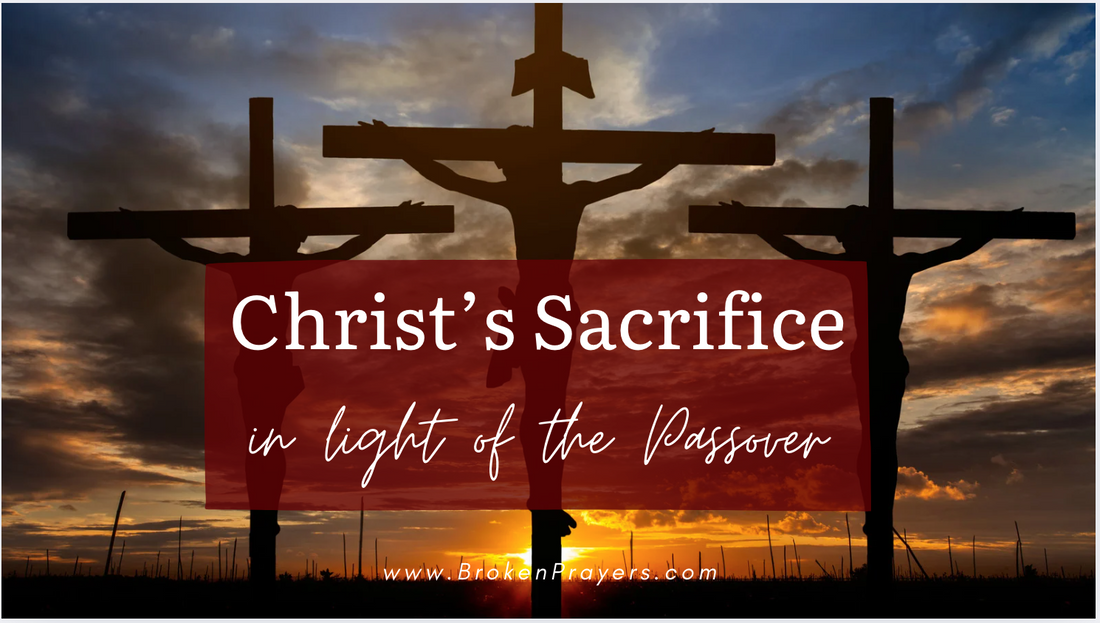
The Four Cups, the Last Supper, and the Eucharist: How Jesus Fulfilled the Passover
Share
You’re likely familiar with the story of the Exodus.
In essence, God, through Moses, tells the Israelites in Egypt that He will deliver them from slavery. As part of His instructions, they are to sacrifice a lamb and mark their doorposts with its blood using a hyssop branch. This sign would cause the angel of death to pass over their homes.
The Israelites were then commanded to eat the entire lamb—nothing was to remain—alongside unleavened bread. The blood, however, was never to be consumed, as it represented life, which belongs to God alone. This was not merely a historical event but an enduring ritual. God commanded that future generations commemorate it as if they themselves had been present that night.
What are the Four Cups?
By the time of Jesus, the Passover celebration had developed into a more structured tradition, commonly understood through the symbolism of four cups:
- The first cup marked the beginning of the meal, typically accompanied by the reading of the Exodus narrative in the synagogue.
- The second cup was associated with the meal itself—eating the lamb and the unleavened bread.
- The third cup followed the singing of Psalms 114–118, known as the Hallel Psalms.
- The fourth cup concluded the ritual, marking its completion.
The Passion of Christ and the Four Cups
When we examine the Last Supper and Passion through this lens, a striking parallel emerges (Matthew 26:26–30):
- It is likely they had already recalled the Exodus earlier in the evening, as was customary.
- Jesus shares the bread and wine—but there is no mention of a lamb being consumed.
- They sing the Hallel Psalms.
- Then, they depart—but the ritual, interestingly, remains unfinished.
What happened to the fourth cup?
Later, in the Garden of Gethsemane, Jesus prays, “Father, if it is possible, let this cup pass from me” (Matthew 26:39). He is referring not merely to suffering in a general sense, but to the final, concluding act of the Passover—the fourth cup, which had not yet been drunk.
From this moment, Jesus is arrested, tried, and led to be crucified.
And here is the extraordinary truth: Jesus Himself is the missing Lamb.
The Fulfillment at the Cross
In Matthew 27:33–34, Jesus is offered wine mixed with gall—a sedative meant to dull pain. He refuses it. He chooses to endure the full suffering of the cross without relief, out of love for humanity.
Then in John 19:28–30, as He hangs upon the cross, He says, “I thirst.” A sponge soaked in sour wine is lifted to Him—on a hyssop branch. He receives it, and then declares, “It is finished.” He bows His head and gives up His spirit.
This is the moment the fourth cup is completed.
The new Passover is fulfilled.
The Eucharist: The New and Eternal Covenant
In the Eucharist, the elements of the original Passover find their true and ultimate meaning:
- The Lamb: Jesus, the Lamb of God.
- The Bread: Christ, the Bread of Life.
- The Blood: Poured out not on doorposts, but upon the altar of the Cross.
- The High Priest: Christ Himself, who both offers and becomes the sacrifice.
The Exodus foreshadowed a greater liberation—not from physical slavery, but from the bondage of sin and death. And that liberation comes through the perfect sacrifice of Jesus Christ.
Profound Connections
- Bethlehem, where Jesus was born, literally means “House of Bread.” It was also the region where lambs were raised for the Passover sacrifice. The Bread of Life and the Lamb of God was born precisely where both were most expected.
- The lambs for sacrifice were often pierced with rods to prepare them for roasting—laid out in a posture that closely resembled crucifixion. It was a chilling image of what was to come.
- Only priests could offer the Passover sacrifice. Jesus, the true High Priest, freely offered Himself and chose the moment of His death. He completed the ultimate liturgy—ushering in the eternal covenant of grace.
The Catholic Mass
So each time we participate in the Eucharist, we are not merely remembering an event—we are entering into the very mystery of redemption. We partake in the New Passover, receiving the Lamb who takes away the sins of the world.
Christ is not just a part of the story.
He is the story’s fulfillment.
Check out our Bible Study Guide version of this life chaning information to share with your family and anyone wanting to go deeper in their faith! :)
